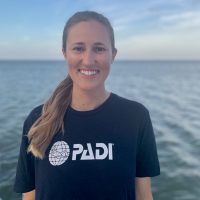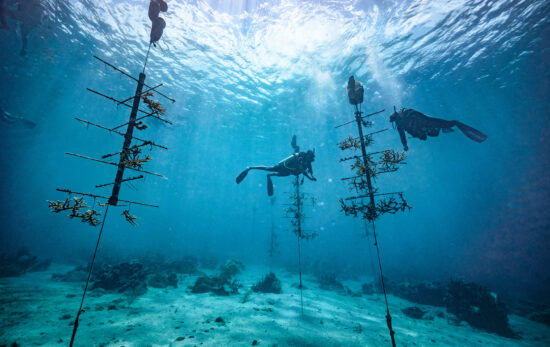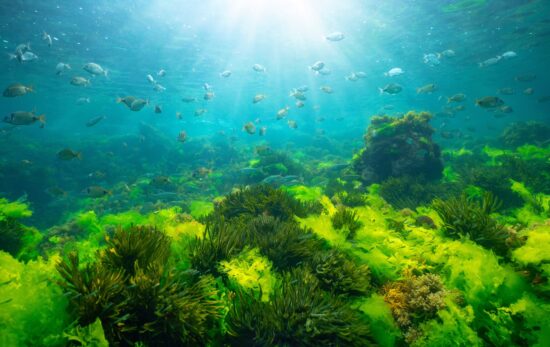Manta rays are undoubtedly one the most majestic ocean animals in the world. Any diver lucky enough to have ever seen a manta ray ‘flying’ by will surely tell you that it was beyond extraordinary. But, like so many other marine species, mantas are surely in need of protection. That’s where Andrea Marshall comes in – she’s the Queen of Mantas!
Dr. Andrea Marshall is a pioneer in the world of manta science and conservation, as well as the co-founder of Marine Megafauna Foundation. She was the first person in the world to complete a PhD on manta rays, and her 20 year research career has been instrumental in bringing about real conservation changes and policies globally for these majestic giants. Here, she answers a few of our questions about the world of manta conservation and how being a life-long PADI diver plays a role.
When was the first time you encountered a manta ray during a dive?
Andrea Marshall: I will never forget the first time I saw a manta. It was an extremely significant moment, and not just because I went on to dedicate my life to these animals, it was simply one of those moments underwater where you realize how small you are and how incredible and powerful nature is. I was in Costa Rica diving offshore at the Cocos Islands with a film crew who was at the time shooting silvertip sharks. Everyone was faced toward the reef filming the sharks and my 6th sense prompted me to turn around. Barreling down at me over the sand was an enormous manta ray. It looked like a alien spacecraft. The most gobsmackingly beautiful animal I had ever seen in real life. It exuded such power and grace all at the same time. As it came straight towards me with intention, looking straight into my eyes, I was paralyzed with wonder.
I’ve been an underwater photographer most of my life and there have been very few occasions when I ‘forgot’ to take a picture. But that’s exactly what happened that day. As the manta passed me and started to swim away I suddenly snapped out of it and I was able to take a single image. To this day it is one of my most precious images. About 10 years later I lead authored a scientific paper officially describing it as a new species.
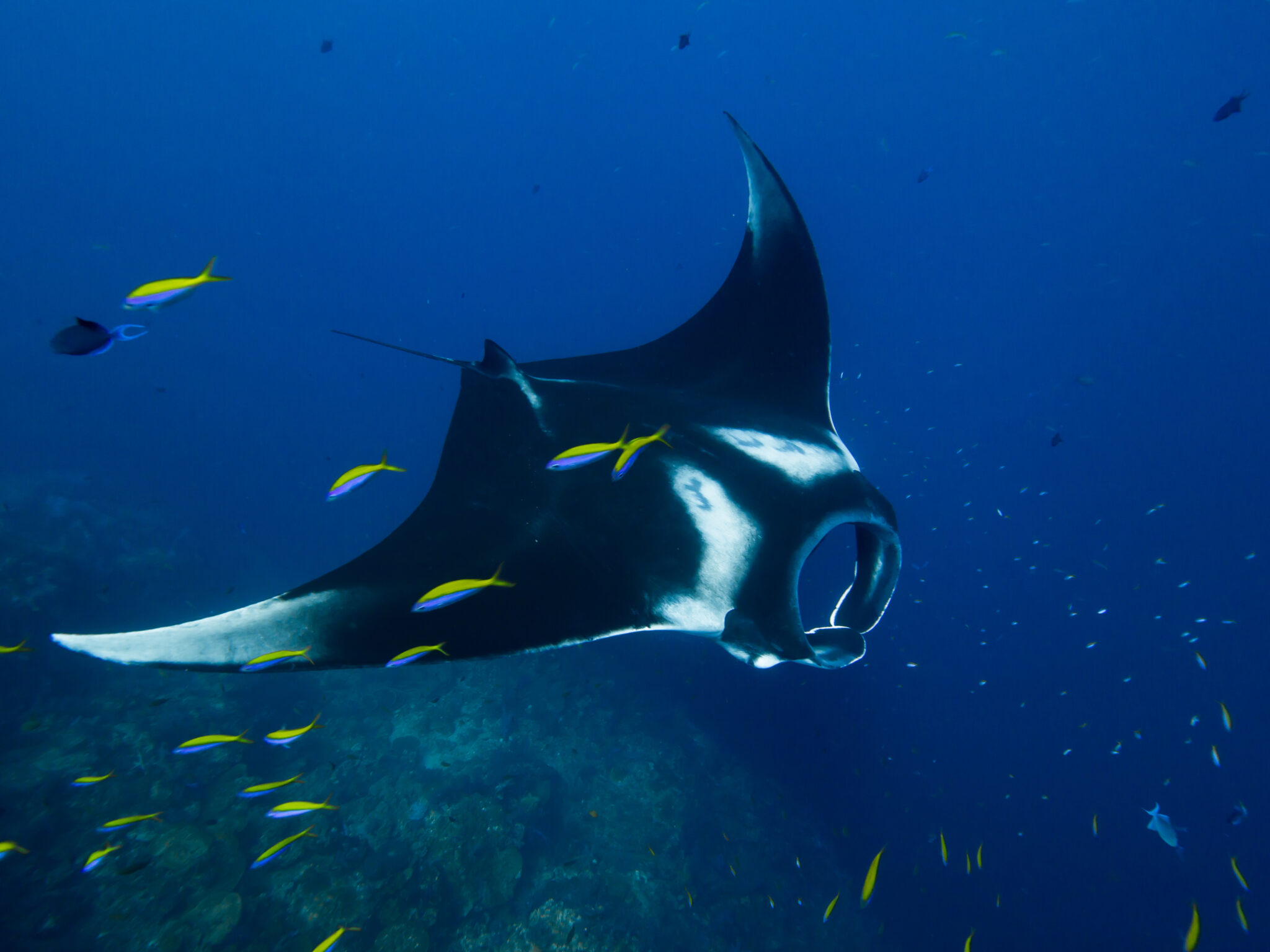
What sort of role does scuba diving play in your work to better understand and protect manta populations?
Andrea Marshall: I am honestly so grateful that I learned to dive at such a young age. I was obsessed with the water when I was young. Any excuse to have contact with it and I was there – swim team, water sports, you name it. Of course it was going underwater that most interested me. I had wanted to be a marine biologist since I was 5. So it was no surprise that I was doing Discover Scuba Diving when I was 11 and asked to get certified on my 12th birthday (the minimum age required at the time). As a result, diving is second nature to me. I am more comfortable in the water than anywhere else.
That means that as a scientists I can focus on my work and not the diving. Animals can feel when you are comfortable underwater and it makes them relaxed and comfortable. The fieldwork we do is incredibly physical. We do a lot of swimming, freediving, and work on scuba. A lifetime of dive training has made me water fit. I have 20 year old students that can’t keep up with me, which makes me laugh since I can hardly run a 5K. But in all seriousness, scuba diving is the single most important skill that I have. Being a strong diver makes me a good field biologist and has helped enormously with my work with manta rays all over the world.
What is Marine Megafauna Foundation all about?
Andrea Marshall: I am one of the co-founders of the Marine Megafauna Foundation, an organization dedicated to ‘Saving Ocean Giants From Extinction’. Our main goal is to develop enduring conservation solutions from pioneering research. We use multi-disciplinary scientific approaches and cutting edge technologies combined with creative fieldwork techniques. Our teams gather in-depth information on vulnerable marine species from manta rays to whale sharks in some of their most important critical habitats on Earth.
The organization was founded on the belief that passion and sustained effort lead to action and permanent change. As conservation biologists, our mantra is simple, ‘think globally but act locally’. To this end, our scientists continue to champion international protection, but in the countries where we work, we also target lasting change on small scales. MMF is becoming known for pursuing ambitious case studies in developing nations. We aim to set both valuable precedents for the successful management of marine wildlife worldwide and inspire a new breed of conservation biologists to get the job done.
Fundamentally, we strongly believe in the empowerment and inclusion of nationals from the countries we work in and locals from the regions where our projects are based. Too often foreigners spearhead efforts that fall short for the simple reason that their approach did not include the education or support of local communities. Our well-rounded, highly qualified teams reflect this belief and give us the knowledge, expertise and local support to create lasting change.
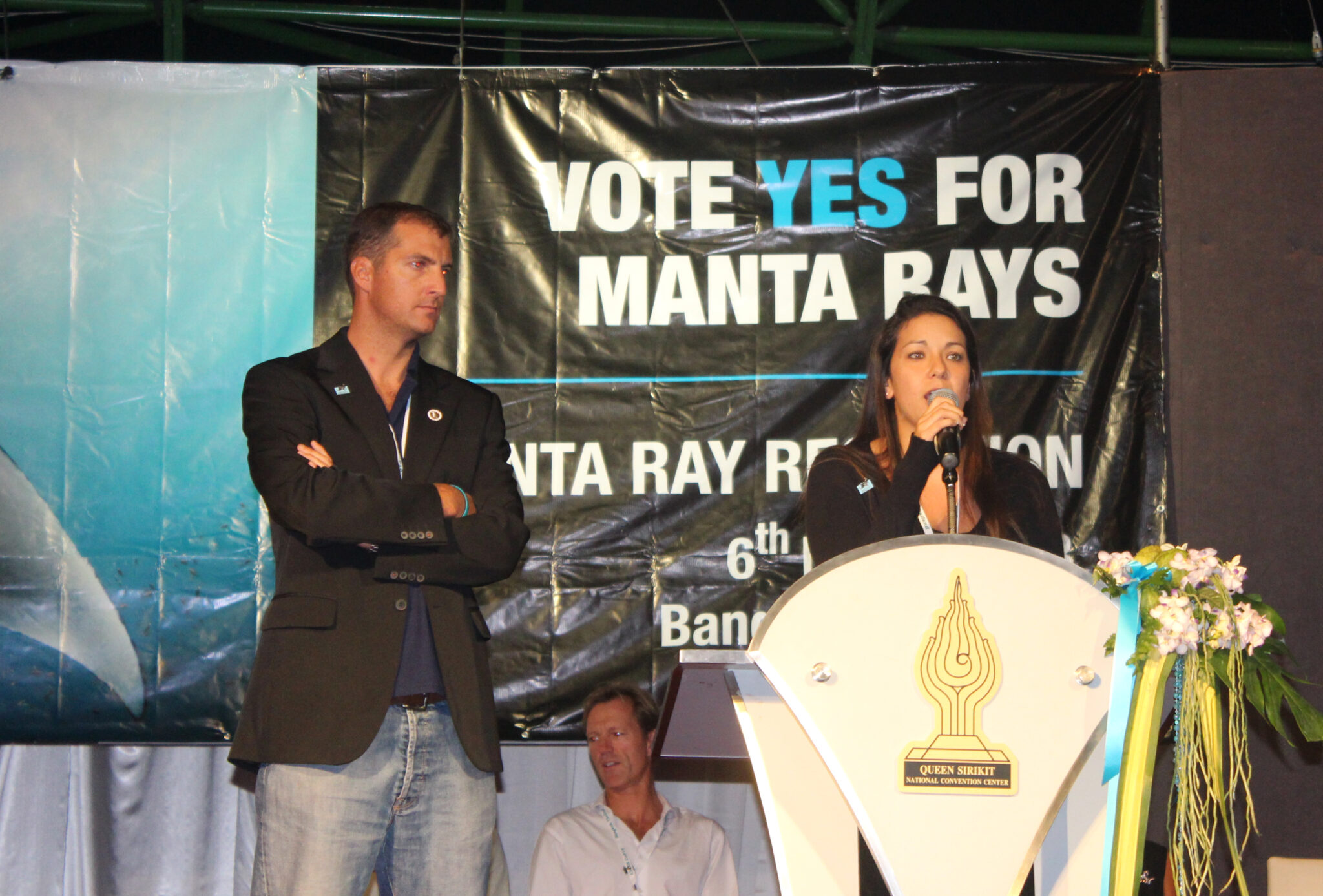
What conservation successes for mantas are you most proud of bringing about?
Andrea Marshall: As a conservation biologist you always hope that the work that you do will have an impact and that impact will result in animals being safeguarded in some way. So for me, I would have to say #1 is the pioneering science I did on manta rays which seems to have opened the field to so many others.
I am also very proud of the science that my team and I did to underpin the listing of manta rays species on CITES (Convention on International Trade in Endangered Species). That perhaps still stands out as one of my most satisfying and proud moments – seeing the board light up at the 2013 CITES CoP in Bangkok with a majority support by parties to list all species of manta rays on Appendix II. I was so overcome by emotion – elation, pride, mostly relief. I knew in that moment that manta rays would be ok, or at least that we are turning the tide. CITES does not ban domestic hunting nor does it eliminate international trade – there will always be an illegal black market out there – but it is still a powerful mechanism for conservation. With trade fishing representing the largest threat to manta rays, this single victory changed the fate of manta rays globally. It was historic. I still get goosebumps.
I think perhaps my proudest project has been the creation of the first global online database for manta rays. It operates with an automated algorithm that matches the unique spot patterns of manta rays like the FBI fingerprint database. MantaMatcher, as it is affectionately called, stands to revolutionize manta ray research by both centralizing data and tapping into a much broader of base of contributors – namely the global scuba diving community. Still in its infancy, but growing in popularity every day, this database will ultimately help biologists store, organize and utilize their manta ray data, and facilitate much needed international collaborations between researchers. The ultimate scientific goal of this initiative is to track global trends, increase ecological knowledge of manta rays, and gain a broader perspective of the species’ immediate conservation needs. I am so excited about this program and we are already starting to see the benefits.
What are some of the best ways that people can help support manta conservation?
Andrea Marshall: The most obvious way to get involved in this type of marine conservation is to cast your vote for the politicians in government that will help make this happen. People really need to take the environment into account when voting. Folks can also support campaigns like the ‘Campaign for Nature’, or others – we get places when we start a movement and when there is buy-in from the masses. If you can’t support in significant ways, keep your eye out for petitions to sign or other small ways to help campaign for the protection of vulnerable species or wild spaces. It might not seem like it, but many of the sanctuaries and reserves of the world were created off momentum fueled by public outcry. As a conservation biologist I can argue at the top of my lungs, citing the scientific rational behind the need for protection, but a much swifter way to gain visibility and government support for a project is to get the voting public behind the cause. If you are frustrated with the lack of protected areas in your backyard, do some digging around, see what campaigns or projects are in the pipeline and figure out what you can do to help, even if it is only by lending your voice.
Scuba divers and nature enthusiasts can also help by doing what they love best… going for a dive or visiting a national park. The enormous costs of running protected areas can hamper their establishment. Of course, the faster they can become self-sustaining, the more likely they are to succeed and serve as models for others behind them. A surefire way for national parks, marine reserves and protected areas to sustain themselves is through tourism. Tourism is the largest industry in the world and marine related tourism has been growing steadily for decades. Just as ocean lovers favour companies with good environmental policies, purchase eco-friendly products and abstain from eating unsustainably caught fish, it is important that the public supports protected areas around the world by simply visiting them. The surest way for you to voice your approval of protected areas is to preferentially support them over areas that are not protected or that are managed poorly. This small act of support can have huge impacts on the success of these kinds of initiatives and help facilitate the creation of future protected areas.
It is also important to always follow codes of conduct and best practice standards when you are out in nature. You are not only responsible for your own actions, but you may serve as a role model, influencing the behaviour of others around you. Again, it is about balance. To have the continued privilege of going out into nature, seeing wild places and engaging with marine life, it is important that we protect the places/things we love. This means not disturbing or touching animals, plants or structures in the sea, it means taking photos and memories away with you and nothing else, and it means not leaving anything that you brought to the sea behind when you leave.
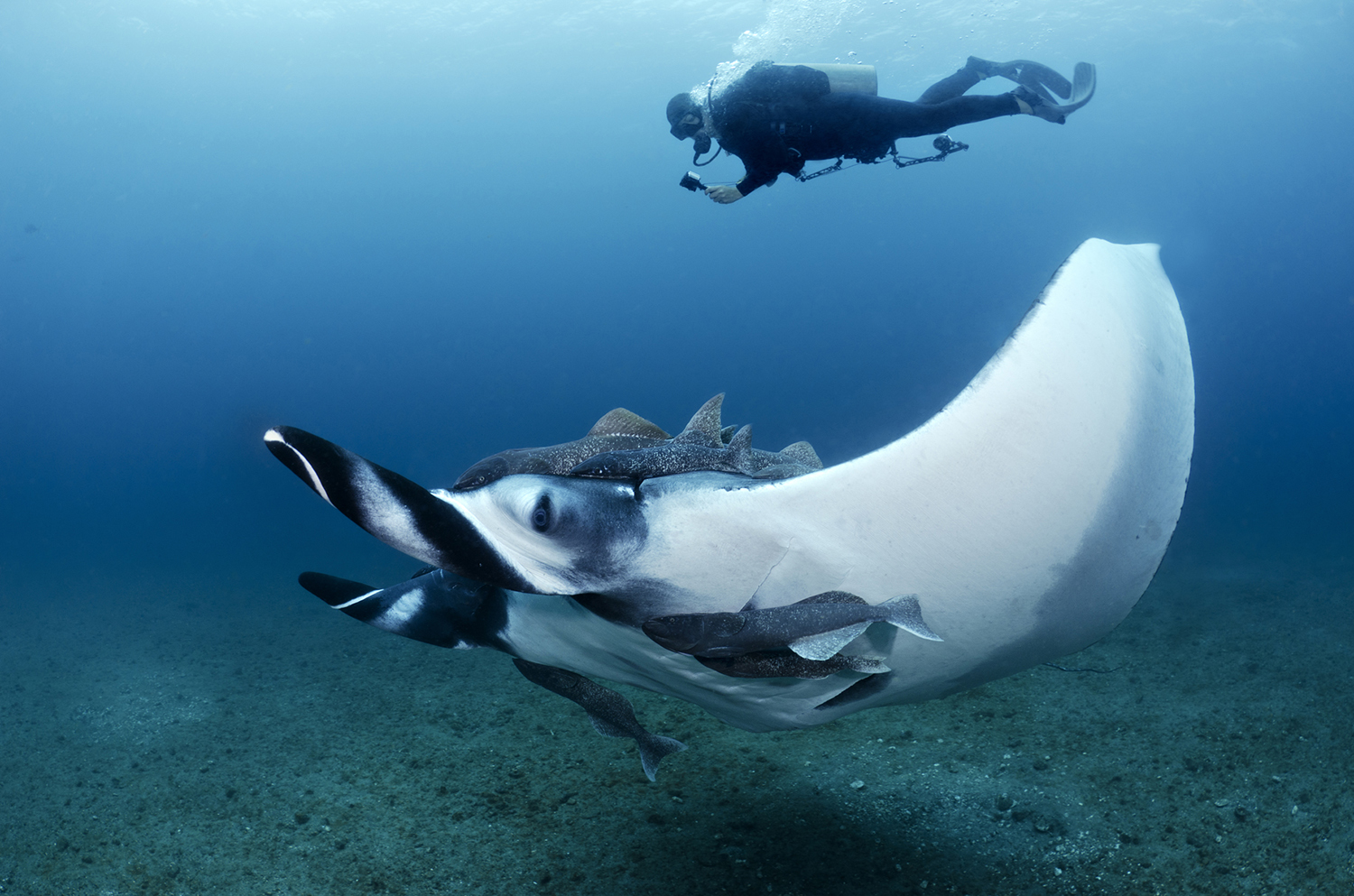
Ready to Dive into Conservation?
- Get involved in citizen science efforts, like MantaMatcher.
- Follow Marine Megafauna Foundation on social media @marinemegafauna.
- Learn more about shark and ray conservation in the AWARE Shark Conservation course.
- Listen to Dive Stories Podcast episodes focused on conservation.
- Join our global community of Torchbearers working together to seek adventure and save the ocean.
